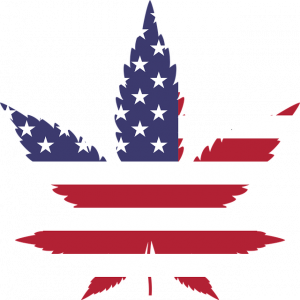
On Tuesday, July 21, the FDA released draft guidance for clinical research related to the development and manufacturing of cannabis-based drugs, which gained particular interest following the legalization of hemp in December 2018.
Although the guidance does not cover other FDA-regulated products, such as hemp-derived CBD (hemp CBD)-infused foods and dietary supplements, the last section of the document — Section III C — addresses delta-9 THC and dosage calculations that may be indicative of the manner in which the FDA may propose to regulate hemp-derived finished products.
The guidance provides that those using hemp raw material in their drug development activities should follow the U.S. Department of Agriculture interim rule, or any superseding rule, for sampling and testing methods in evaluating the level of delta-9 THC. Accordingly, the agency recommends that drug approval applicants submit information, such as a certificate of analysis, indicating the percent delta-9 THC by dry weight, along with detailed descriptions of testing methods used to evaluate the level of delta-9 THC to help ensure the THC concentration doesn’t exceed 0.3 percent.
While this recommendation isn’t earth-shattering, the FDA guidance goes on to address an unexpected and highly debated issue: the legality of intermediate, unfinished hemp-derived products — in this case, drug — whose THC levels may rise above the 0.3 percent limit.
Specifically, the agency warns of the eventuality that starting materials that meet the definition of hemp may be considered Schedule I controlled substances if their THC levels were to rise above 0.3. The FDA recommends that those who handle hemp material consult with the DEA regarding the control status of such products that are under development.
Some manufacturing processes may generate materials, such as intermediates or accumulated by-products, that exceed the 0.3 percent delta-9 THC by dry weight threshold even if the source material or finished product does not exceed the threshold. Sponsors, investigators, and applicants who anticipate generating such intermediates or by-products that may be shipped between manufacturing sites should contact the DEA for recommendations.
This suggests that the FDA may allow only hemp-derived intermediate or unfinished drug products that never exceed 0.3 percent THC on a dry weight basis to be studied and evaluated. The statement further implies that the FDA may adopt a similar position with other categories of hemp-derived products. Such an approach would be detrimental to both the hemp and hemp CBD industry given that the processing methods used to convert raw hemp into extracts and other finished products inevitably increase the THC concentration, even if fleetingly.
The FDA guidance also goes on to address methodologies that should be used to calculate delta-9 THC concentrations based on the form of the drug.
Although the composition of cannabis-derived drugs, which the FDA plans to treat as botanical raw material, will be calculated as the amount of the compound(s) naturally present on a dry weight basis prior to extraction or other manufacturing steps, this type of dry weight calculation has limited utility for intermediates such as solutions, extracts in solution (whether aqueous or nonaqueous), and for finished products.
Consequently, the FDA recommends to calculate the delta-9 THC concentration for intermediates or finished products that contain cannabis or cannabis-derived compounds based on the composition of the formulation with the amount of water removed, including any water that may be contained in excipients (inactive substances that serve as vehicles or mediums for drugs or other active substances).
The guidance sets forth specific calculation methodologies for a solution-based material, including intermediate, in-process material, or final drug product, and solid oral dosage form (e.g., tablet or capsule).
It remains to be seen whether these standards would prove burdensome for hemp drug developers, but these calculation methods are particularly interesting in that they are the first practical cannabis-related guidance published by the FDA. Though drugs are regulated differently from other categories of products that fall under the authority of the FDA, these methods of calculation provide hemp CBD stakeholders with a potential framework for calculating the delta-9 THC and CBD dosage of finished products.
Yet, all that said, this guidance is not binding; it is merely a reflection of the FDA’s current thinking on the manufacturing and testing of hemp-derived drugs. As such, it remains to be seen if the FDA’s current recommendations will become legal requirements following the 60-day public comment period.
Nathalie practices out of Harris Bricken’s Portland office and focuses on the regulatory framework of hemp-derived CBD (“hemp CBD”) products. She is an authority on FDA enforcement, Food, Drug & Cosmetic Act and other laws and regulations surrounding hemp and hemp CBD products. She also advises domestic and international clients on the sale, distribution, marketing, labeling, importation and exportation of these products. Nathalie frequently speaks on these issues and has made national media appearances, including on NPR’s Marketplace. For two consecutive years, Nathalie has been selected as a “Rising Star” by Super Lawyers Magazine, an honor bestowed on only 2.5% of eligible Oregon attorneys. Nathalie is also a regular contributor to her firm’s Canna Law Blog.

